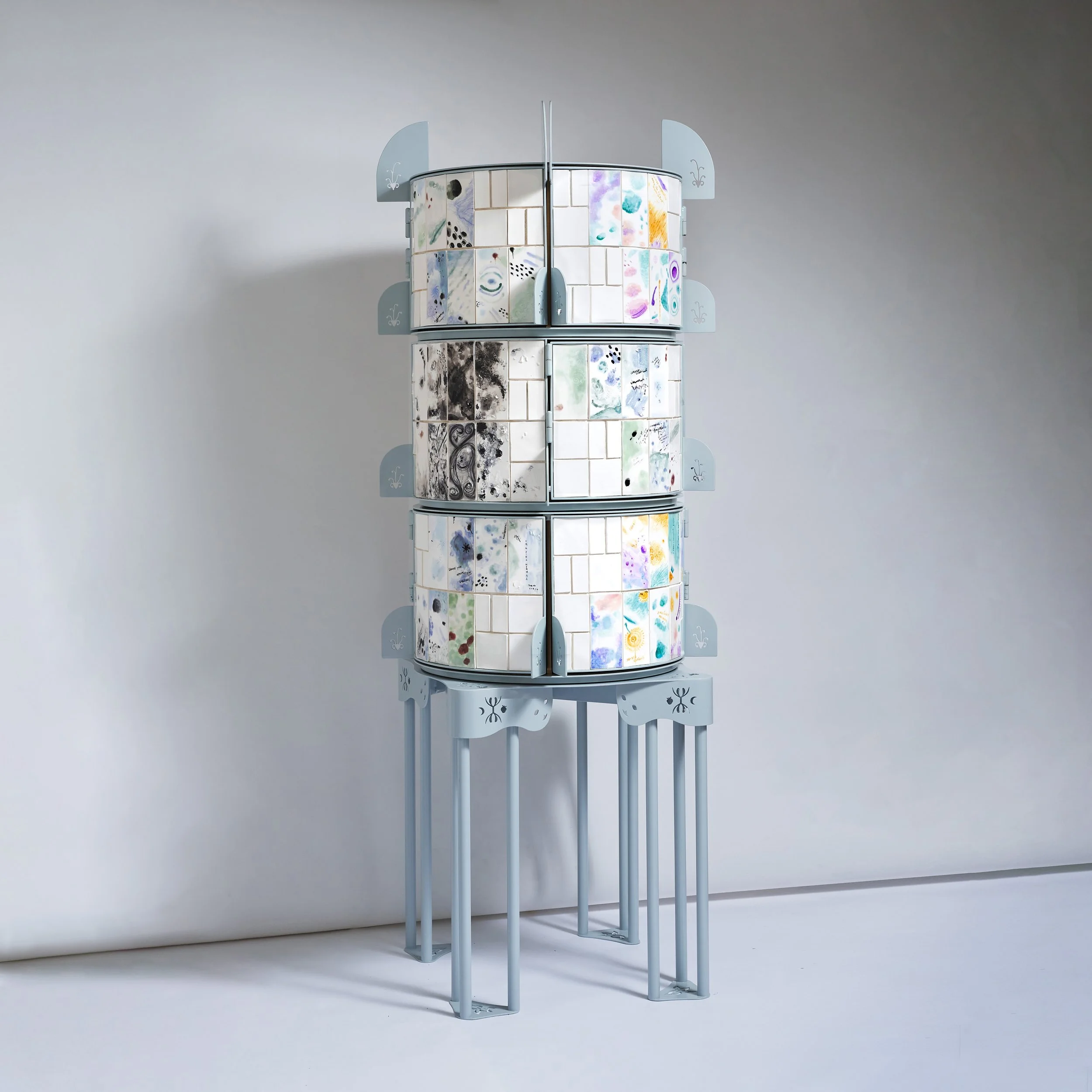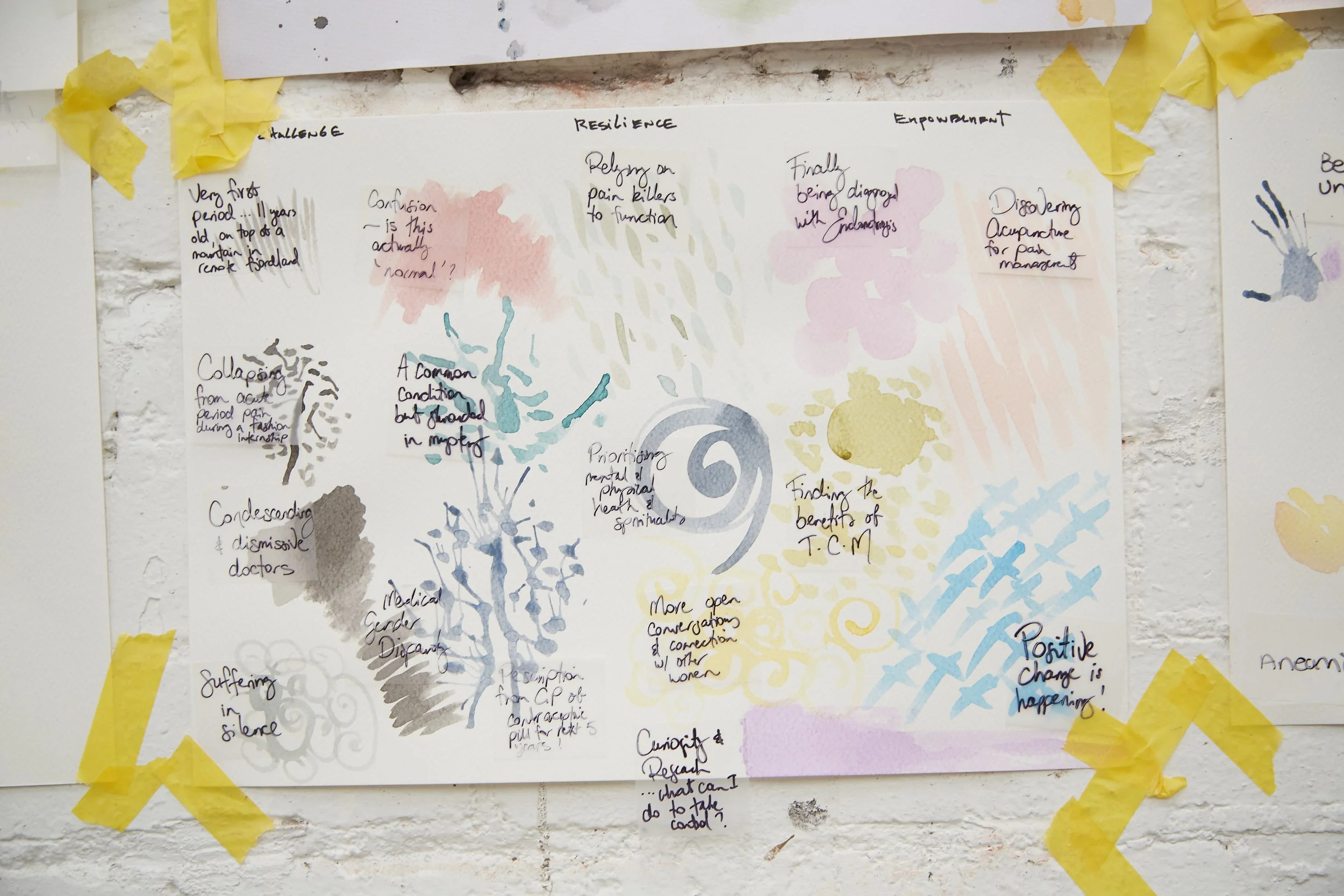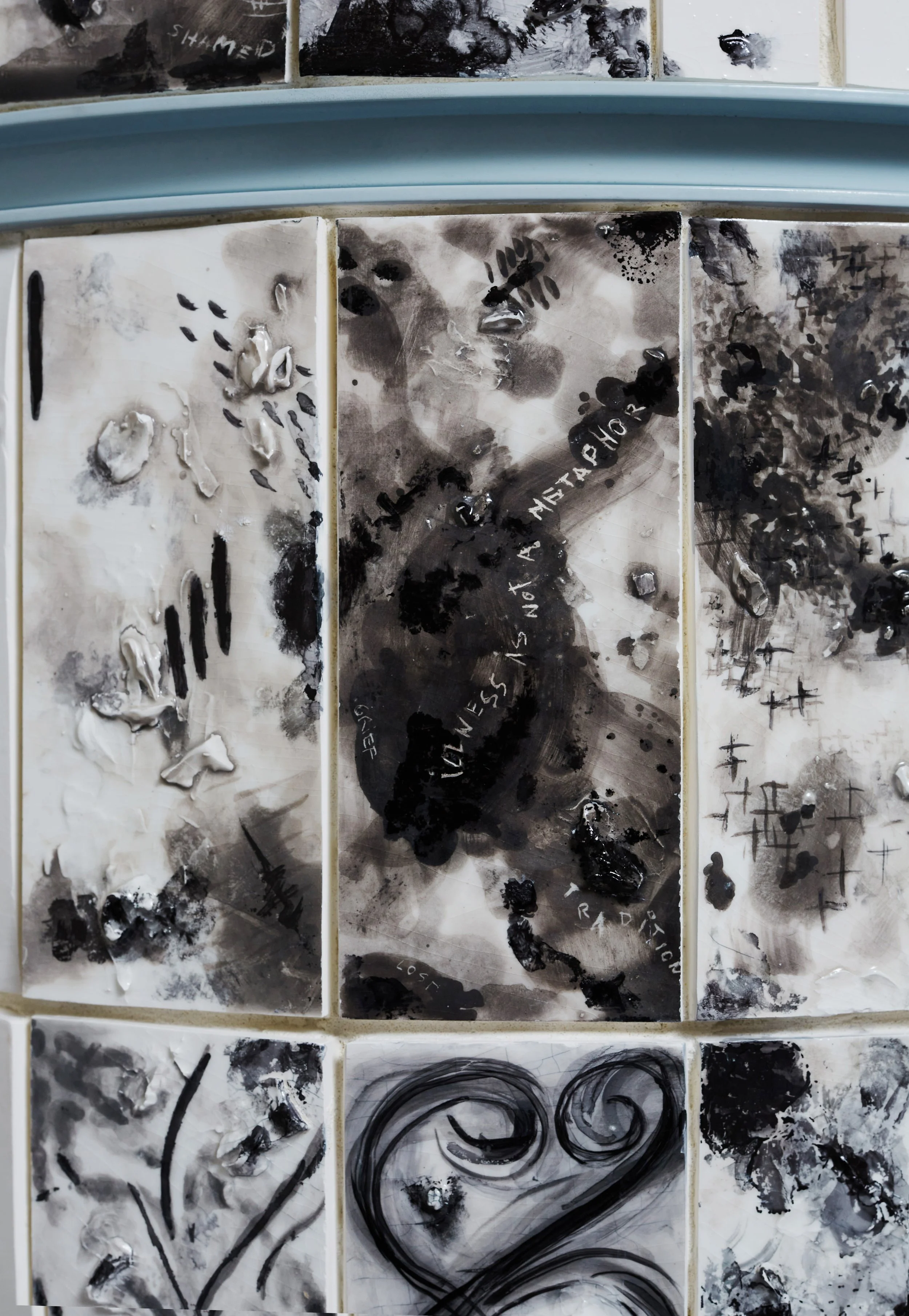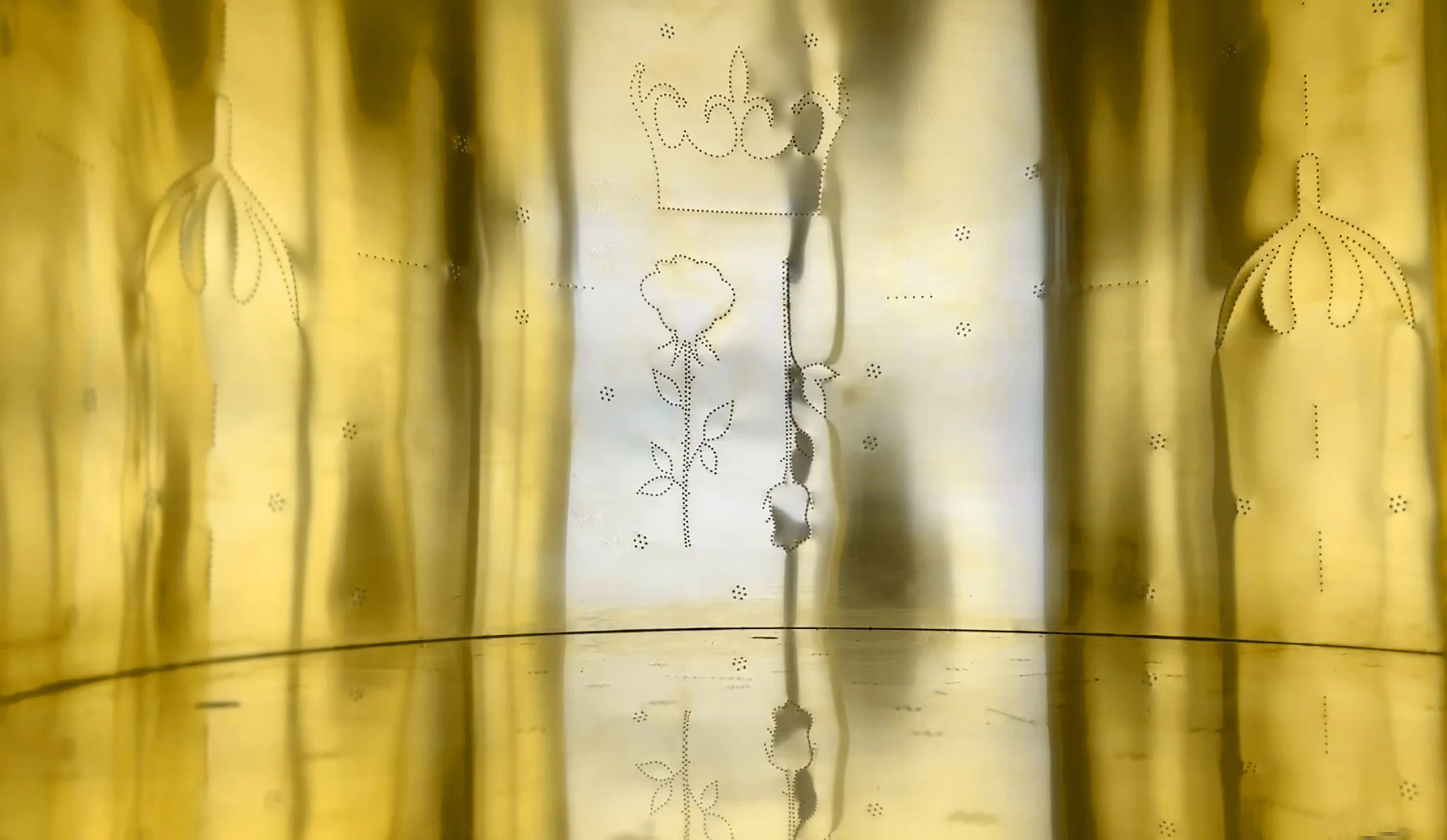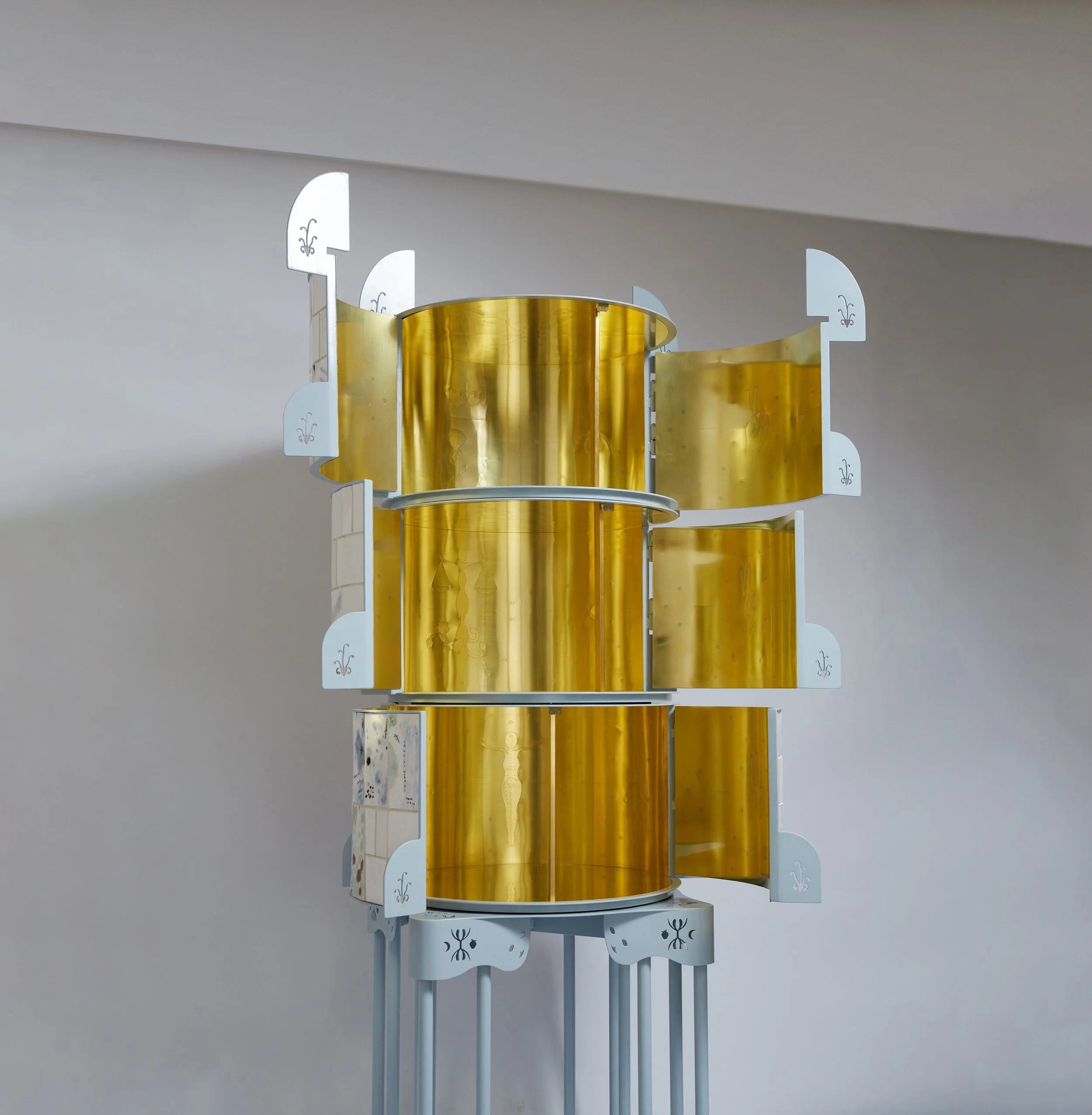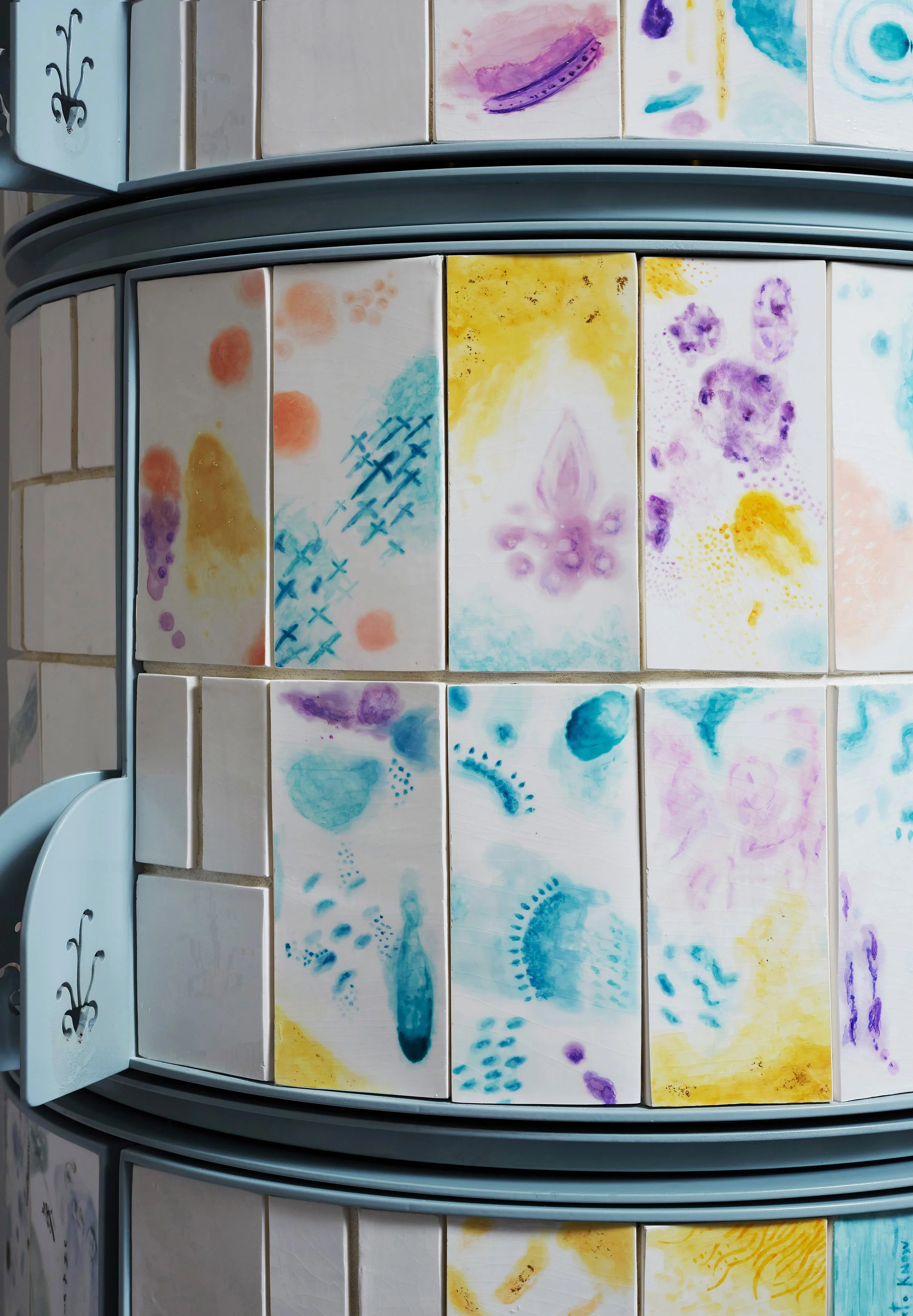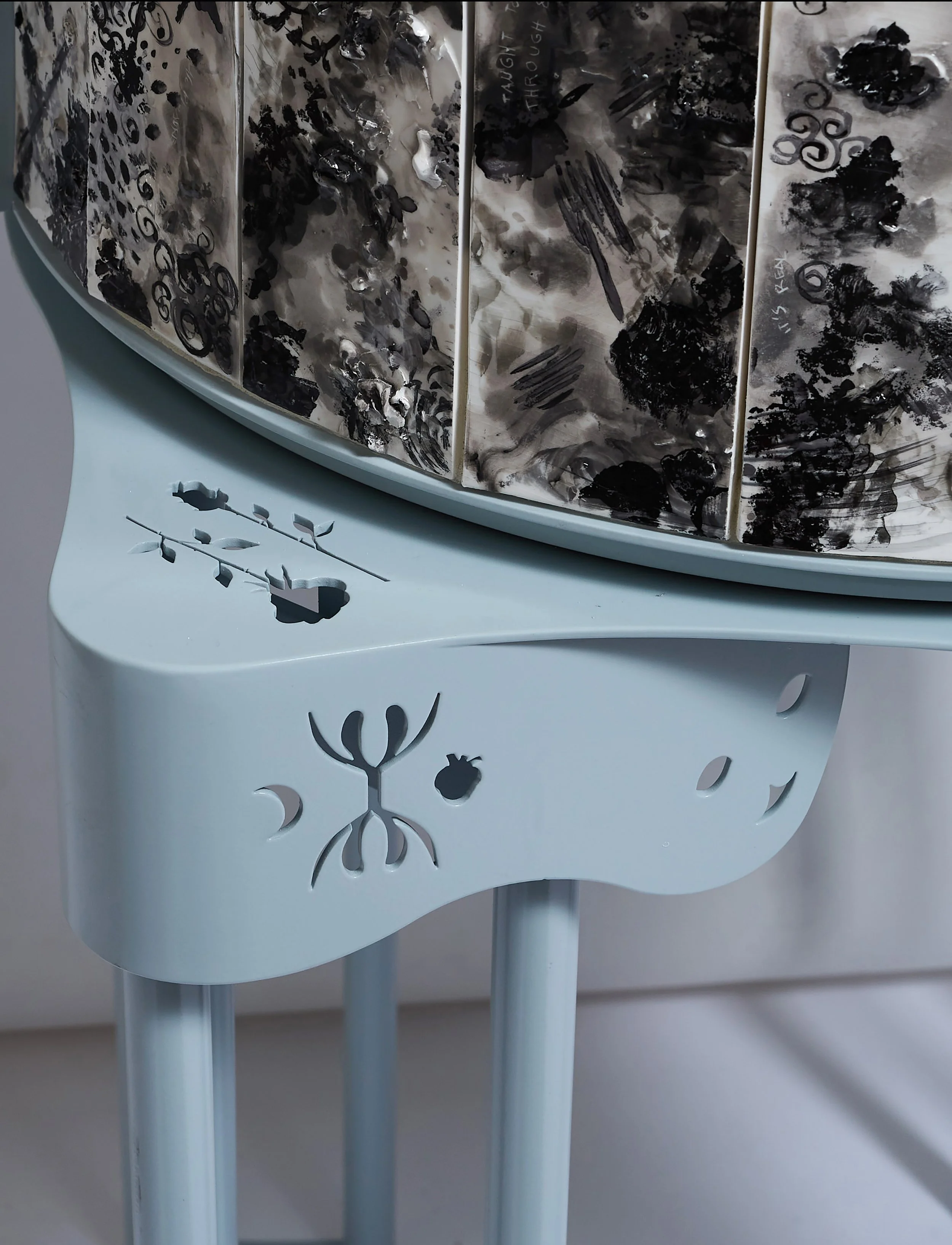CHRONICLES OF RESILIENCE . 2024
Endometriosis is a whole-body disease affecting 1 in 7 women in Australia. The Chronicles of Resilience cabinet is a sacred vessel designed to tell the stories of individuals affected by this condition, inspired by the designer's personal journey. The cabinet serves as a means of connection, solace, and advocacy, drawing from the lived experiences of others. At its core, this project is about giving form to what often remains invisible. The cabinet is both a sacred vessel and a political object, created to honour the complex realities of endometriosis and those who live with it. It is not just about my story; it’s a communal archive of strength, pain, advocacy, and hope.
As part of this process, I invited 11 individuals affected by endometriosis to take part in a collaborative workshop. Together, we explored how personal experience can be translated through material. Each participant inscribed their story onto porcelain tiles using underglazes, creating lasting impressions that now form the tiled façade of the cabinet. These tiles are arranged around four central themes: Challenge, Resilience, Empowerment, and Imagined Future. The cabinet's exterior is a tactile and visual narrative, with each theme expressed through distinct colour palettes and textures. The final section, Imagined Futures, carries handwritten notes from the participants, turning private reflections into public declarations.
The form and symbolism of the piece are rooted in spiritual and devotional design traditions. I drew inspiration from the Portuguese Oratório Doméstico, the small household altar common in Portuguese and Brazilian homes, the Japanese Butsudan, and the Tibetan prayer wheel. These influences converge in the cabinet’s structure: three large rotating drums with oversized handles allow the façade to be physically reconfigured. This shifting composition mirrors the cyclical, unpredictable rhythms of chronic illness and invites viewers to engage with the work through movement and contemplation.
The tiles themselves are inspired by azulejos, the traditional hand-painted tiles found in Portuguese architecture, long used to communicate knowledge, values, and shared memory. I was drawn to their role in storytelling, not simply as decoration, but as vessels of culture and resilience. In this work, the azulejo becomes a feminist surface, one that carries lived truths across time and space.
Inside the cabinet, the tone shifts. The interior is lined with brass panels, engraved with symbolic motifs of health, justice, and bodily autonomy. This lining reflects a warm, golden glow, a gesture of sanctity for the intimate items that may be kept inside. The cabinet sits on a four-legged plinth, with sculpted female faces on each leg. These faces stand as quiet sentinels of solidarity, strength, and presence.
The piece embodies both concealment and revelation. Just as endometriosis is often hidden from view, the contents of the cabinet remain unseen unless deliberately opened. This duality, between inner pain and outer silence, between vulnerability and visibility, is central to the work.
In 2024, Chronicles of Resilience was awarded the Australian Furniture Design Award, presented by the National Gallery of Victoria, JamFactory, and Stylecraft. This recognition affirmed the value of using design not only as a means of function or aesthetics, but as a platform for dialogue, advocacy, and healing. NGV Senior Curator Ewan McEoin described the work as “a courageous and symbolic piece that draws attention to women’s health, using the language of furniture to ignite important conversations.”
Chronicles of Resilience reimagines what design can do: it can create objects that hold stories, open spaces for those ignored, and offer forms of solace and advocacy. It asks how we might design not only for the eye or the hand, but also for the spirit, the memory, and the body in pain.
Acknowledgments:
Participants: Abouk Ring, Cecilia Sordi Campos, Dr. Bridie Rae Shepherd, Dr. Elizabeth Crovara, Dr. Jacqui Alexander, Eddy Carroll, Foni Salvetore, Meagan Streader, Sally Hull, and Sophie Hardy . We thank each participant for sharing their personal stories, enriching this project with invaluable insights and fostering deeper understanding and solidarity around endometriosis.
____________________________________________________________________________________
MATERIALS Powder coated steel frame; Porcelain; Underglazes; and Brass
____________________________________________________________________________________
DIMENSIONS 2100mm Diameter x 800mm Diameter
____________________________________________________________________________________


